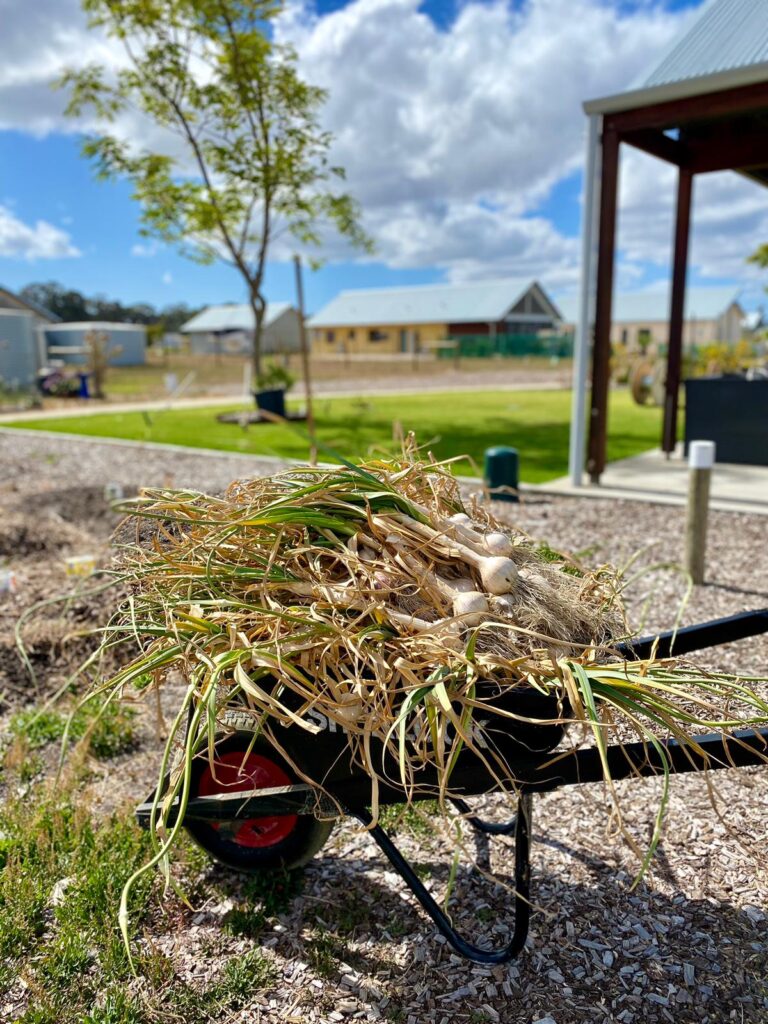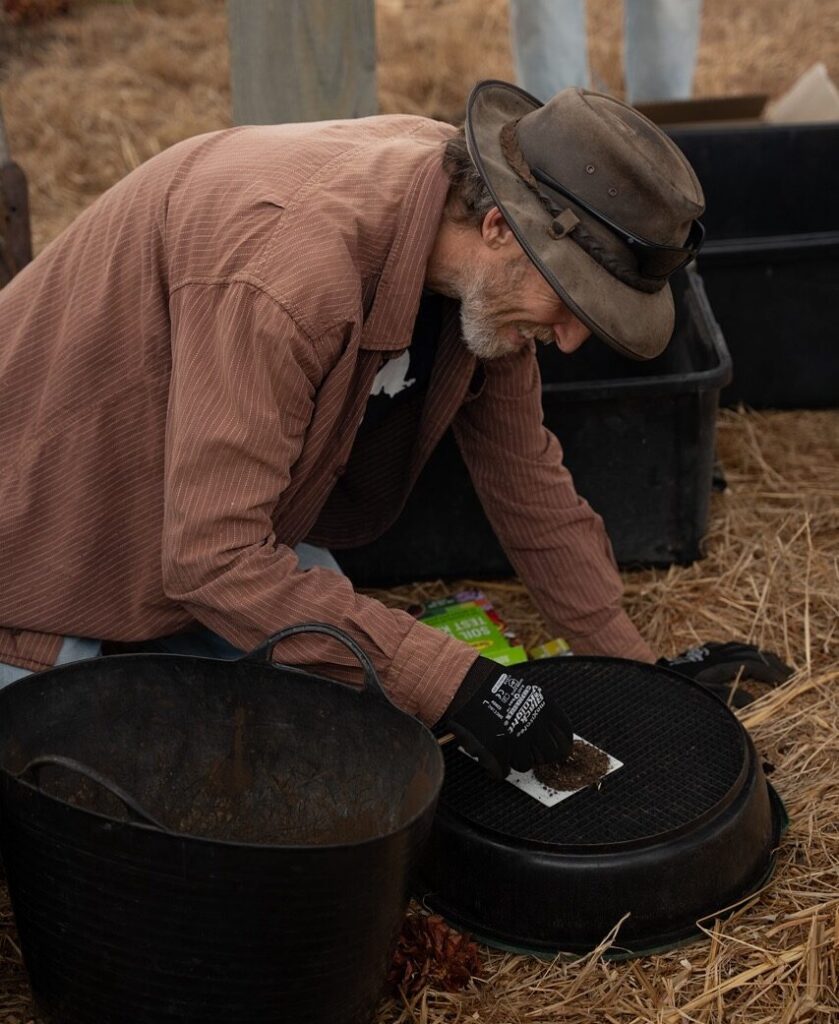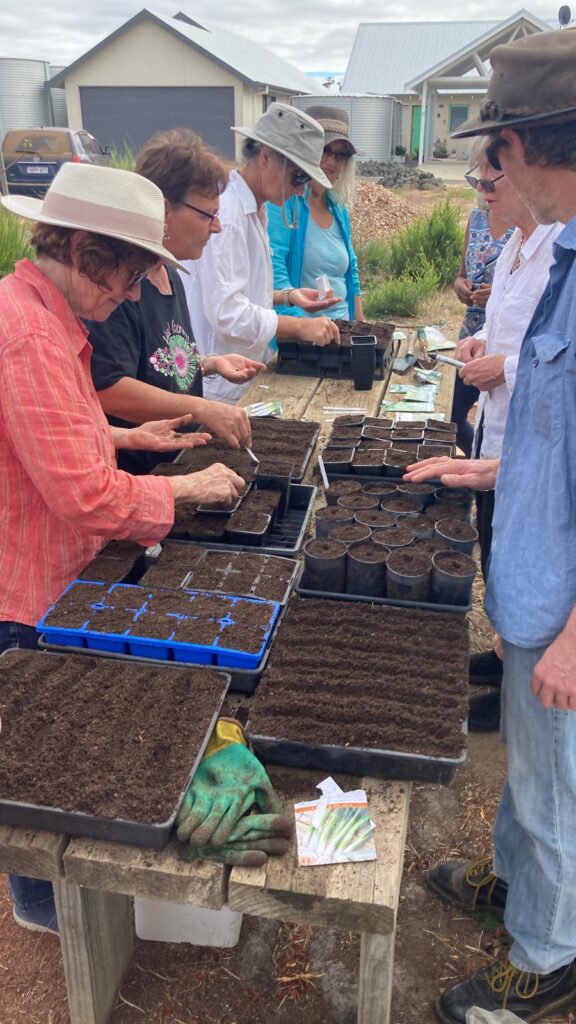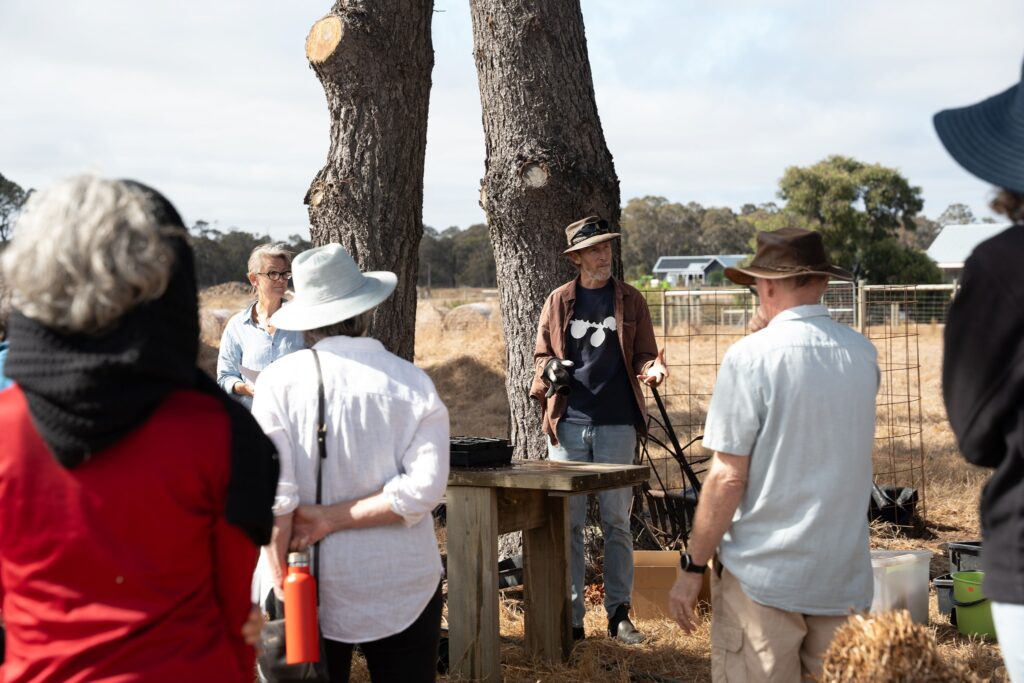At last, after a long, dry parched season, we’ve had some relieving rain.
I’ve said it before and I’ll say it again, we can get a lot of leverage out of the water that falls from the sky in the wet season that’s ahead of us. Plants, soil fauna and microbes all need moisture and it is this combo that ultimately turn loose rock minerals onto fertile living soil. By filling every patch of dirt with green plants, that feed the soil life, we can literally grow soil, so if you haven’t done so already, get planting.

It’s starting to get a bit late now for some of the cool season vegetables, but you could still squeeze in some brassica, leek and spring onion seedlings, and plant garlic, broad beans, rocket, leaf lettuce, turnips and radishes.
Short of that, fill the space with a cool season green manure or cover crop mix.
For those that are starting a new garden, the mild autumn conditions are perfect for prepping soil and making new beds.
While you’re at it, you can incorporate any minerals that the native soil is a bit short on. The WEV soils could do with a top up of all the macro minerals – Calcium, Potassium, Phosphorous, Magnesium and Sulphur. A good combo of products to that supply all of this are gypsum, dolomite and phospot, which are readily available from the local ag suppliers in 25kg bags. The general recommendation is to put out about 100g of each per square meter. It’s important to note that these are mineral fertilisers that don’t easily dissolve and wash away with the coming rain.

Once you’ve topped up your soils mineral bank account, you just need living activity to make them available and deliver the inherent nutrients to the plants. As soon as your soil is prepared, get some plants in there to protect and hold it in place.
Autumn is also a great time to start a compost heap so that you have some compost, ready to go, for spring planting. All of the crop residue from the summer garden can go in, along with some straw, manure, autumn leaves, green clippings, seaweed etc… basically anything organic and maybe some minerals. A good analogy for the right ratios of each to add would be a pasta dish. The pasta component makes up the bulk of the dish and this would include any dry plant material – straw, leaves, woodchips etc… The smaller sauce component that goes on top of each pasta layer includes chicken/cow/sheep/horse manure, pelletised manure products, blood and bone etc… The side salad is made up of fresh plant residue, clippings, seaweed etc… and the sprinkling of salt and pepper is represented by a few handfuls of rock minerals, clay, wood ash, biochar etc…

When making a heap, these different materials are best layered or well mixed, moistening as you go if needed.
This fresh pile of goodies is akin to party food for microbes, and they quickly get busy. At this early stage of high activity, the heap heats up and the microbes rapidly use up available oxygen. To avoid cooking and/or suffocating the good guys we need to ensure adequate aeration. This can be achieved with regular turning over the first couple of weeks or the use of mechanical components like pipes that enable air to get in and out of the pile.
If you’re only building a small pile, less than 0.5m high, or just adding a bit of material at a time, these measures may not be necessary, as the party never really gets too hectic. Worms are always a great addition when things cool down.
All of this was covered in this seasons Autumn Frenzy, Growing Organic, Patch from Scratch and Composting workshops which were well attended, so if you’re not sure about something, I’m sure there’s plenty a villager out there that can offer some advice.
With the season winding down and the winter weather coming in, the garden group will soon go into hibernation for a couple of months, ready to emerge again in spring.
In the meantime, plant hay while the sun shines :-)

